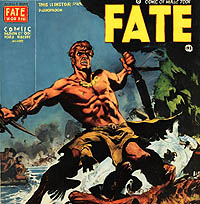James, I noticed on your recent training interview you were practicing your stick moves slowly. My coaches always said train like you're going to fight. How does that fit in with your training and how do you apply it to your fighters' training. Shouldn't you train as fast as you're going to fight? If you are attacked and need to use that cane, won't you respond too slow if you've been practicing slow?
-Bill
Bill, this is one of the most important questions you can ask. I use a tempo ladder, which we will get into below.
Yes, at a certain point in any session in which you are not training injured, or within three days of a fight, your should roll at maximum speed—not through the whole work out though.
Why train slow?
Particularly with weapons, one needs to learn the full motion of his fighting tool as that tool may come into contact with something or somebody at any time, not necessarily when and where you want it to. This slow motion training facilitates:
-learning,
-instruction,
-form assessment,
-full range muscle development*
-injury assessment,
-injury prevention [by warming up] and
-injury rehabilitation by getting the blood moving without stressing your body.
This tempo principal should be applied in all combat training, but more so with extension and edged weapons than with empty hands. I especially advocate slow training for shadow boxing and line drills and with the heavy bag. The light bags pretty much always get used at speed because the apparatus forces the tempo.
As for training for a balls-out fight, I never trained at full speed through a whole workout after I learned how to train. When learning and when reaching retirement your slow training will be expansive. But at your peak, most of your workout will be at full, or close to full, tempo. I've had almost 1,000 fights in total and have put in over 10,000 rounds of sparring, so the psychology to go all out in an instant is there. However, I cannot train at full speed for most of my workout without injury. Yes, this means I may suffer a use injury when defending myself—but that is the time to get hurt, not in training. Hence I no longer compete, as a younger guy can force the tempo and I'll be tempted to injure myself trying to keep up, or trying to express the speed and range of motion I once had. It is important for the aging fighter to retune his body as it changes to maintain performance awareness.
But what is more important than my old carcass being able to boogie when called, is your young body not getting hurt in training. If I had not trained full speed through my teens, I would still be fighting fit, still competing with the best stick-fighters. But I racked up more injuries training all-out in my teens than I did in about 900 fights.
I will go over the tempo ladder in the next articles, which will be titled Tempo Ladder Training.
Remember, Bill: I am the past and you are the future—make my past mistakes work for you, not for the thug that attacks you after you're an aging guy with a lot of injuries impeding your expression of justice.
* Wrestlers get this when they roll, but boxers and fencers and other striking arts only develop the muscles through the full range of motion when momentum is eliminated, in other words in slow motion. This will be covered more in the follow up article.
Being a Bad Man in a Worse World
Fighting Smart: Boxing, Agonistics & Survival











James,
As usual, your writing is excellent.
I'm 63 and fighting the injuries of stupidity, which you referenced, as well as the normal aging process (which is a bitch).
I practice the hickory cane system of Dave McNeill, but last year I contemplated getting out of martial arts, other than my private cane practice. Fortunately, I committed myself to a serious practice of Villabrille Largusa Kali.
In this system of Kali, one of the things stressed is practicing slow. I think their reasoning is in line with yours.
As far as fighting slow, I think adrenaline will take care of that.
Please keep writing, James. I have three of your books and will buy more.
Semper Fi.
Mark Lawrence
Mark, I take it this is a system that favors largo mano or long range, basically fencing adapted to indigenous weapons. I believe that training slow is more important with thrusting weapon and more important with extension weapons, than the closer arts as variables, hang time and the danger of getting jammed and having to be able to abort a stroke on the half-beat, are of more concern beyond arm's length.
I will you success raining and will begin working on a crucifix post in the yard as the whether clears. I will have Oliver film some of this.
Thanks, for the kind words.
You forgot "muscle memory".
You know, Sam, that's true—but that is really what this is all about. So that was like a firearms instructor forgetting to mention the target. When we are attacked it is likely this is all we will have since we cannot expect initiative.
So, yes, the entire article is about cultivating full range muscle memory with minimal wear and tear.